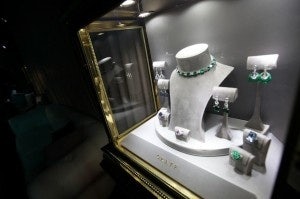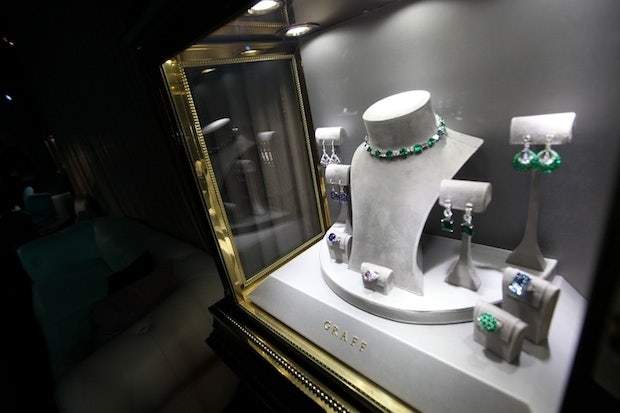Jeweler Was To Follow Likes Of Prada, L’Occitane And Coach With HK Listing#

Citing "adverse market conditions," the luxury diamond brand Graff Diamonds has postponed its planned US$1 billion Hong Kong IPO. The scuppered offering, which would have valued the shares held by founder Laurence Graff and his family at up to HK$23.9 billion (US$3.1 billion), had been widely promoted in recent months as the company has looked to fuel a broader Asian-focused expansion effort.
As Jing Daily wrote earlier this month, Graff had slated June 8 as the date to make its Hong Kong debut, but apparently the company lost heart among signs that Hong Kong's red-hot luxury market may be slowing. As we pointed out, Hong Kong listings by major Western brands have become increasingly common in the former British colony, with Prada, L'Occitane and Coach among those that have used Hong Kong IPOs to fund expansion in China:
Graff’s long-expected IPO will come on the heels of similar moves by other now more Asia-focused luxury brands — not all of which proved stellar. Last summer, Prada’s Hong Kong IPO raised US$2.14 billion by pricing its shares at the bottom of its guidance in what the Wall Street Journal said was a “reflection of deteriorating stock market conditions and concerns about the Italian luxury retailer’s valuation and a potential tax charge.”
As the Wall Street Journal pointed out this week, several theories abound on why the hordes of mainland Chinese tourist-shoppers that have become a regular fixture in Hong Kong over the past several of years have become somewhat thinner:
Shifting economic winds are affecting the trend [...] Growth on the mainland is easing, credit is getting tighter and more people are worried about the global economy. Some Chinese tourists, meanwhile, are simply going elsewhere.

Less voracious crowds of mainland Chinese shoppers have been felt by jewelry brands in particular in Hong Kong, the WSJ notes, with Tiffany & Co. saying sales growth had slowed to 10 percent in the first three months of 2012 compared to 26 percent during the first three months of last year. But the fact that Hong Kong's major luxury jewelry brands, Luk Fook and Chow Tai Fook, have been hard-hit in the first half of this year -- with shares of the former falling 19 percent and the latter tumbling 18 percent -- indicates that the falling Hong Kong sales have been in some way adversely affected by Chinese tourists going elsewhere to do their shopping.
The likes of Luk Fook and Chow Tai Fook are certainly not top draws for visiting Western or other Asian tourists like they are from mainland Chinese, so their dropping share prices probably point at a combination of factors -- not just belt-tightening among Mainland shoppers, but also the fact that wealthier outbound Chinese tourists are going further abroad and buying more luxury goods in places like New York, Singapore or Paris. As the WSJ adds,
Nine years after mainland China first began granting individual visas for mainland Chinese to visit the city, Hong Kong is no longer such an exotic destination. "Instead of going to Hong Kong to shop four times a year, why not save money and go to Korea or Japan once?" Mr. Chan says.
...
As mainlanders venture farther abroad, Europe and other Asian countries are big beneficiaries of the Chinese tourist boom. Global Blue, a company that helps tourists get tax refunds from their shopping abroad, said it processed 59% more tax refunds to Chinese shoppers during the 12-month period ended in March 2012 from the same period a year earlier. Global Blue operates in 35 countries, mostly in Europe but also Japan, Singapore and Korea. Shopping in the U.K. was particularly active: Global Blue saw tax refunds from Chinese shoppers go up 64% in that period.
